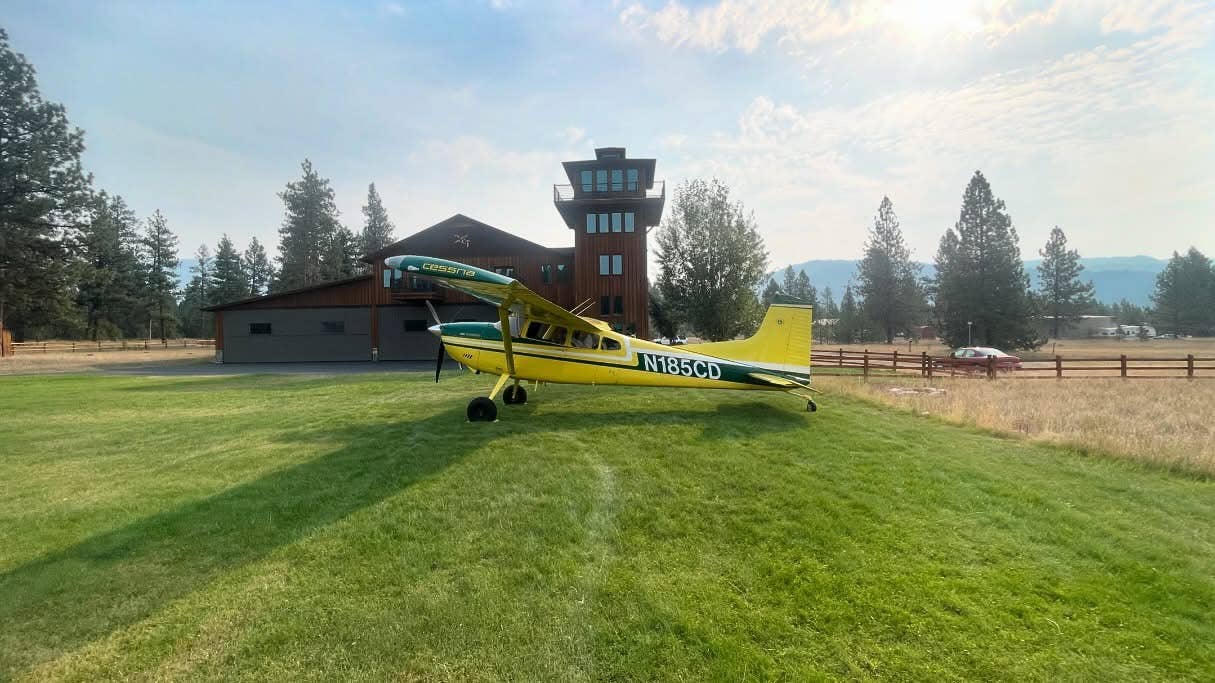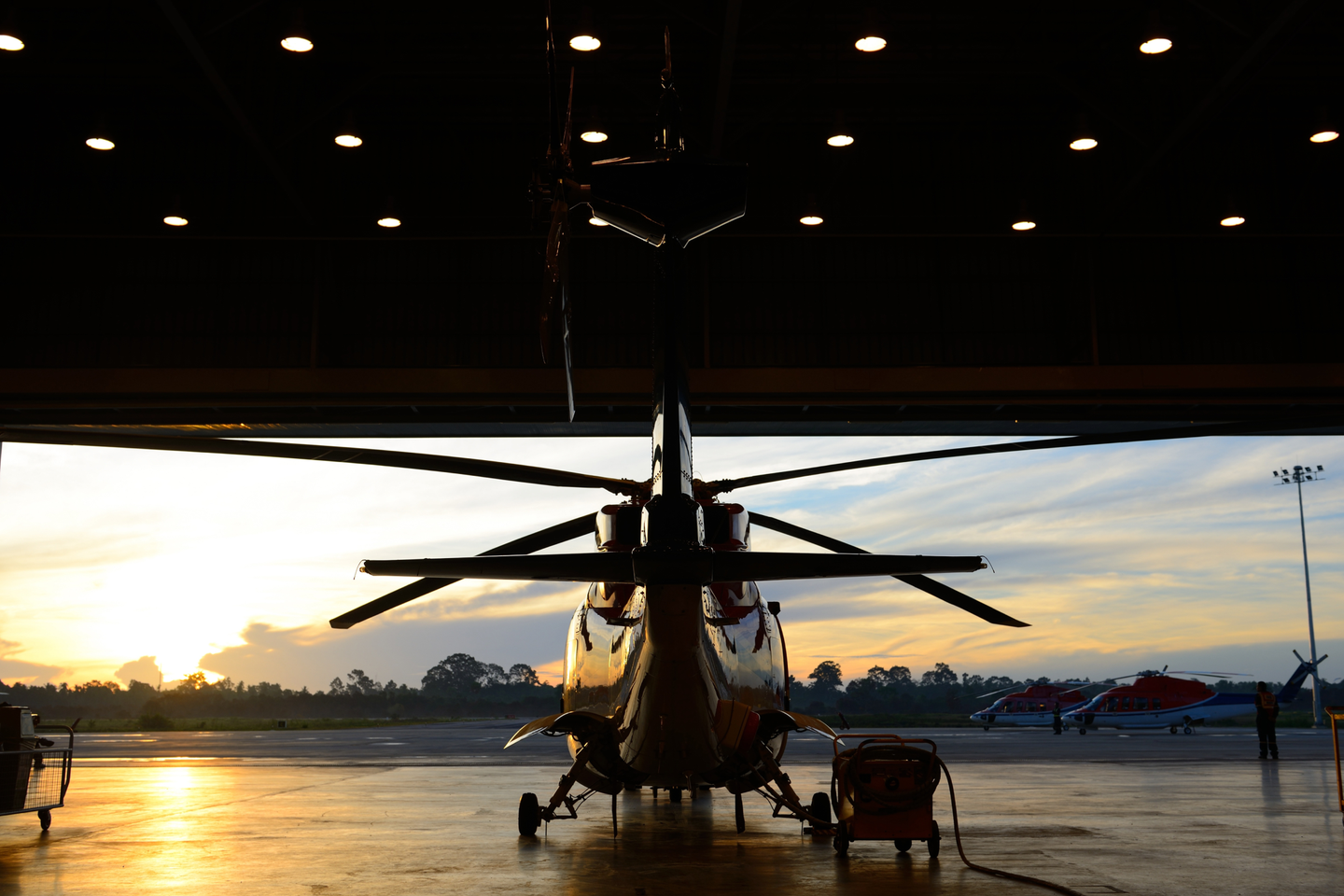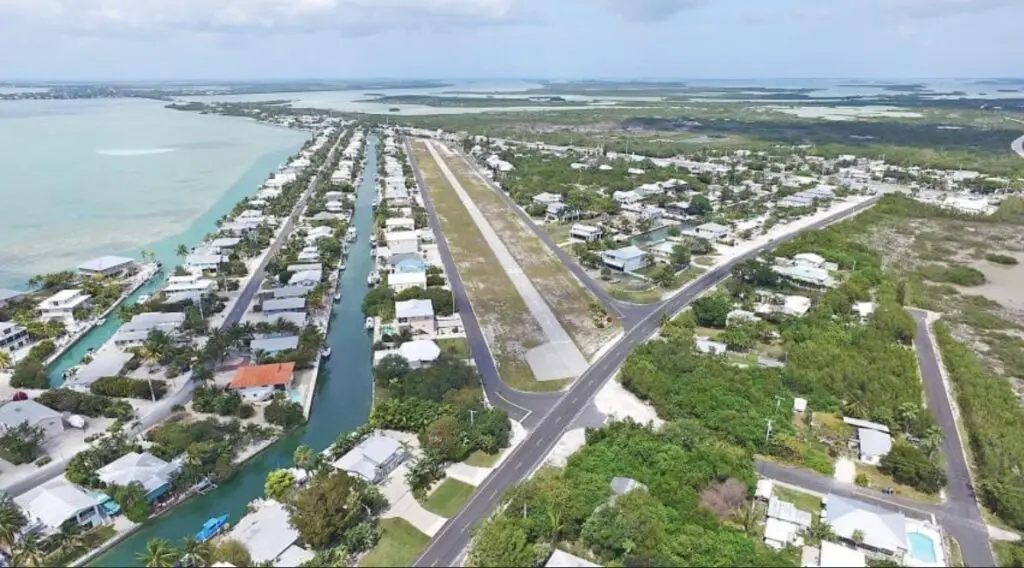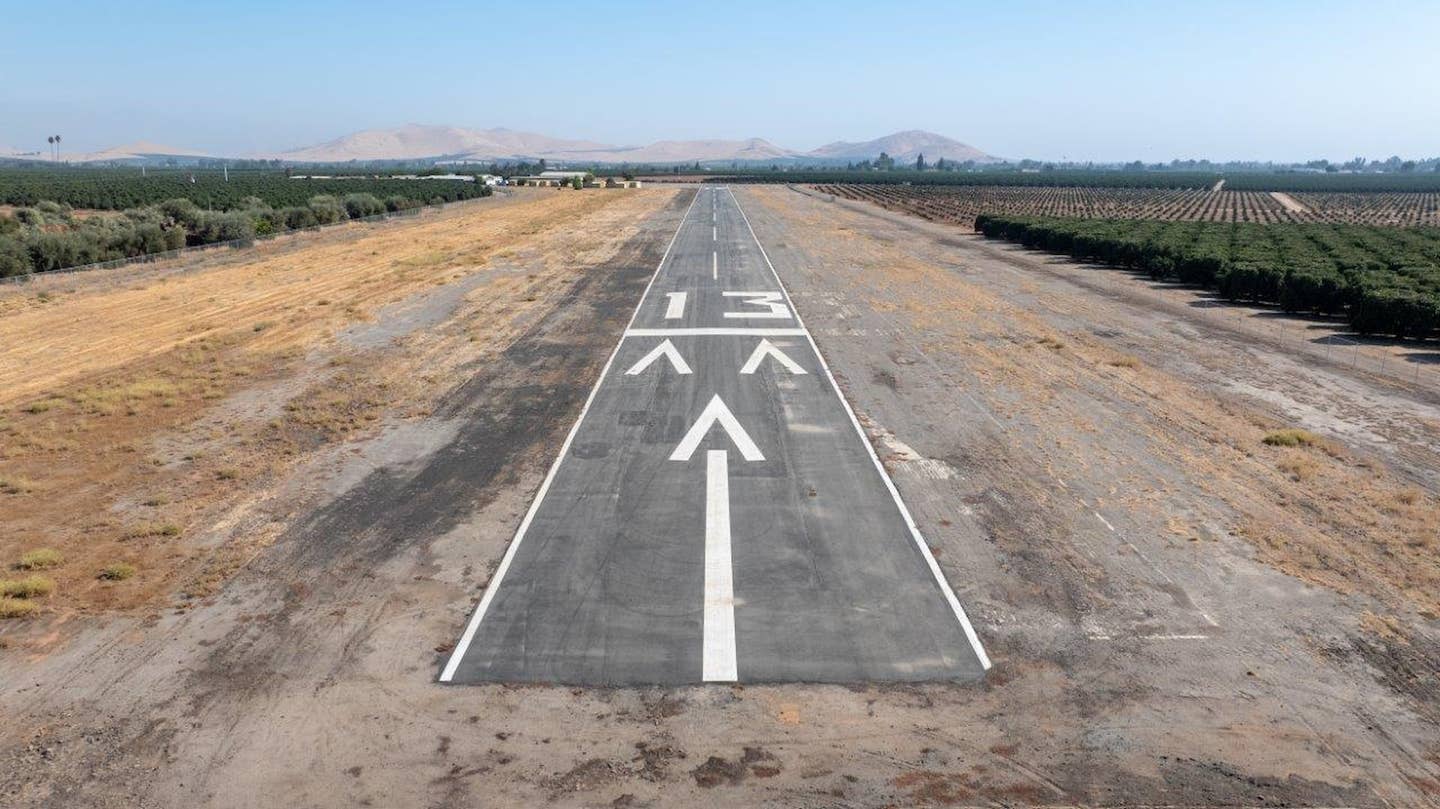Utah Development Project Takes Aim at GA Hangar Shortage
Plans for Patey Aviation Business Park in Spanish Fork, Utah, include more than 138 general aviation hangars.
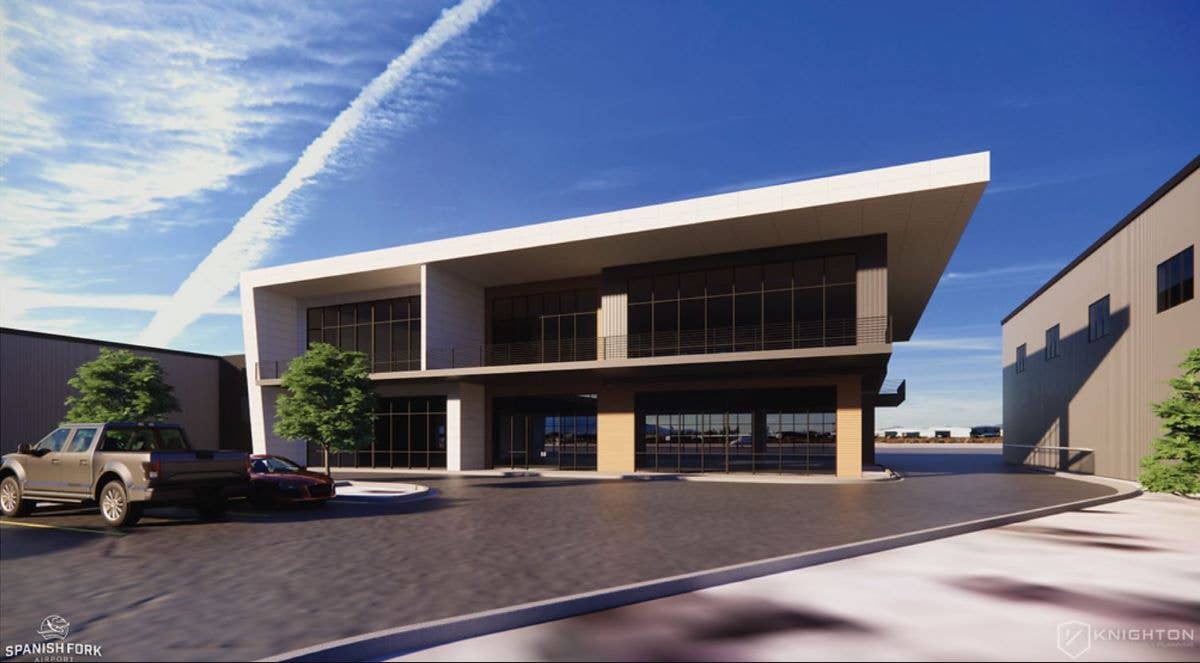
A rendering of the proposed FBO facility at Spanish Fork. [Courtesy: Patey Aviation Business Park]
Mike Patey has a reputation within the aviation community for being a high-energy pilot who builds awe-inspiring experimental aircraft.
Those who have contributed to the millions of views on his memorable YouTube videos know that Patey’s aviation adventures often begin in his home state of Utah. Now, a new line on his aviation resume is hangar developer, as he has joined forces with fellow pilots to bring more than 138 new hangars and a new FBO building to his home airport.
Chain of Events
This project was the result of an unfortunate evolution at airports in the local area, according to Patey.
“We started to see a unique and unfortunate chain of events, which was the bigger airports squeezing out general aviation all throughout Utah,” Patey said. “They closed down a great general aviation airport in St. George, Utah, moved it into a bigger location, and shut down all of the small hangars. It was basically a complete removal of an airport to become a more commercial-centric facility. Salt Lake City International Airport (KSLC) started to become a little more challenging [to work with], as if they were trying to be more commercial only. We started also seeing that with South Valley Regional Airport (U42), which is primarily only general aviation, where they stopped allowing people to build their own hangars and only allowed the airport to build and rent space.
“That doesn’t feel as much of a home, family community, since you can only rent and not own part of the field. And as that started to happen, we started watching and saw it happening all across the country. The little guys are getting squeezed out, the grassroots people with passion.”
To be a welcoming place for these pilots, as well as positively impact the growing demand for hangar space at his longtime home airport, Patey banded with three of his friends and fellow aviators: Troy Mason, Ryan Gledhill, and Grant Collard.
Mason provided more detail about the hangar shortage and why the four decided to do something about it.
“We kept talking about how we need more hangars here,” Mason said. “In the state of Utah, there isn’t a hangar available for sale—anywhere. In fact, if you want to take your brand-new airplane and tie it down outside, there is something like a 300-person waiting list. And who wants to put a brand-new plane outside? There are no hangars available.”
As a result, the foursome decided that Spanish Fork Municipal Airport/Woodhouse Field (KSPK) would benefit from additional hangar space. Patey explained that this facility has supported his aviation dreams since day one and would be a great place to invest for the future.
“We have been on this field since the day we learned to fly, both my wife and I,” Patey said. “Woodhouse Field is one of the oldest airports in Utah. It’s a generational family airport, and the original guy who opened it, one of the Woodhouses, was the first to bring aviation to the area. He learned to fix airplanes and also taught his son to fly, who taught his son to fly, and so on. And still today, multigenerations later, there is still a Woodhouse doing small aircraft engine repair and maintenance on our field.
“And fortunately, whether it was luck or foresight, when they were doing the initial development, they only allowed development on one side of the field. This left the other side for future generations. We feel like we are the next generation. We are in the hub of the biggest building area in the state, just outside of Salt Lake City [and just south of Provo], and are in the center of all of these airports where general aviation is being pushed out. And we feel very fortunate to be the next generation here, as we learned to fly at Spanish Fork, built our hangars at Spanish Fork, and started to build all our crazy planes that we like to build here at Spanish Fork.”
There was some work with cities (one eventually relinquished its rights to the airport) that had to be accomplished first before the hangar project got off the ground. There was a considerable amount of discussion needed and Patey’s twin brother, Mark, jumped in to help. Over the course of several years, Mark Patey worked tirelessly to share the group’s vision with the city’s board, allowing it to understand the benefit of such a large-scale project at the airport.
The city of Spanish Fork is now the project’s biggest advocate and is working hand in hand with the four partners to ensure the more than 138-hangar development at the Patey Aviation Business Park is successful.
Dirt Work to Begin
“The city has been so supportive,” Mason said. “When we brought this project idea to them, they said, ‘Yeah, that sounds great. Submit us a plan!’ So that’s kind of how it started. We submitted a plan to them, and they loved it. In fact, they didn’t give us a wide enough space next to the runway, initially. They called us back and said, ‘We heard you. Develop the site plan and tell us what you want.’ That’s what we’ve done.
“The city has been fantastic every step of the way. Every time we need something, they’re accommodating. For example, the typical airport lease is like 15 or 20 years, and the hangars that we are going to build are nice. They aren’t sheds. These are beautiful buildings, and the bigger ones are going to cost, easy, two and a half or three million dollars. Anyway, we went to the city and said that customers for these will have to get loans for these hangars, and 15 or 20 years doesn’t give our customer the ability to get a loan. Their response was, ‘Well, Troy, this is where you are going to find out what great partners we are.’ They gave us a 50-year lease. Fifty years! What city is giving 50-year airport leases right now? That’s what we’ve been able to secure for our customers and the airport.”
Gledhill provided insight into the project’s general timeline, including the date that dirt work is expected to begin.
“What we are hoping [is] we will be able to submit for a building permit, do our architecture, engineering, and everything else to submit for a building permit in June,” Gledhill said. “Unless there are some things with the Army Corps [of Engineers] that we need to work out for wetlands mitigation, we are hoping to break ground sometime [in] early August. If there are some mitigations that we have to go through, we will push that out three months. There will be several different phases. We anticipate the first phase taking about nine months or so. The other phases will start before that phase is totally complete, but I wouldn’t anticipate actual move-ins until the middle of next year.”
The development project doesn’t just include three sizes of hangars but also an FBO building set to rival any across the country, the group contends. This video, produced by Knighton Architecture, showcases a fly-through of the airport property, including the planned FBO building and rows of hangars—with hangar sizes ranging from 48 feet by 48 feet, all the way to 95 feet by 120 feet.
A Destination Stop
“I think that the two main things we took into consideration when designing the site plan is making it an aviator's airport and something that the community is proud of,” Gledhill said. “This is going to be a destination stop…. There will be reasonable fuel prices and amenities, which there are not a lot of at the field right now. People will want to come here. And by getting the community involved, it doesn’t [hopefully] turn into a Santa Monica (California], where people are trying to force the airport out.
“If everything goes the way that we are envisioning, the restaurant will be the dining destination in the city—and maybe even south county.
“There will be several different viewing areas that are front and center in the FBO. You hear a lot about how people got into aviation. They’ll tell stories about how when they were younger their mom or dad would take them to the airport on Saturday mornings for breakfast and watch the planes take off. We are creating some perfect spots for that to happen here. We are also talking about doing walls and tributes to people that made aviation great, including some locals here that are a big part of aviation history. This will be something the community is proud of.”
This sense of belonging among visitors to the airport will be further developed with people coming together. Collard understands the importance of that, as well as what elements foster such an environment.
“I am an apartment developer, and we have seen kind of a sea change in terms of what people want in a community,” Collard said. “In the past, it was just, ‘I want my place to live. I don’t want to see anybody.’ Today, communities are being set up around amenities where you are meant to bump into each other. That’s really what we want to bring to the airport. We want to bring a community [feel] and be a place where people can congregate. It will be a place you go to on the weekend and see people hanging out, not just preflighting their airplane and taking off. It will truly be a place to spend a lot of time.
“And that’s one of those things as a relatively new pilot I’ve appreciated most about aviation is that it brings together a really interesting mix of people that are aviation geeks. It’s a happy thing [for me] anytime that happens.”
The group has a unique metric for success in mind for the project. Rather than focus entirely on dollars and cents, Patey Aviation Business Park’s impact will largely be measured by the vibrance of the interactions at the airport.
“Here’s the shortest summary of whether or not we succeed,” Mike Patey said. “If we come to the airport and we find that half of the people there showed up, even though they are not going flying, we built the right FBO.”

Sign-up for newsletters & special offers!
Get the latest FLYING stories & special offers delivered directly to your inbox



